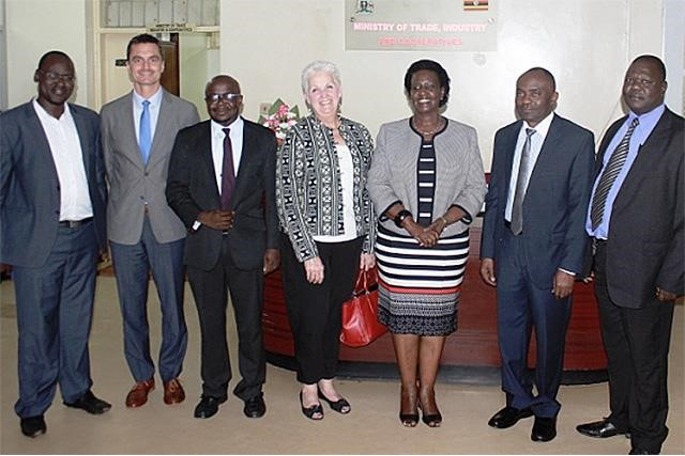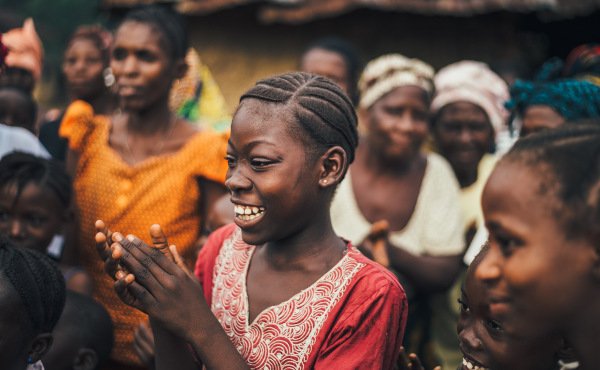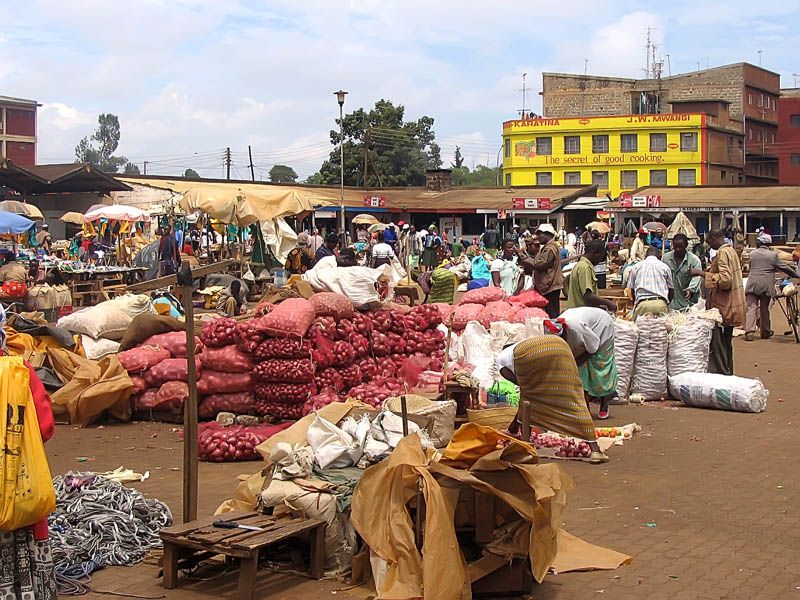Since its enactment in 2000, the African Growth and Opportunity Act (AGOA) has been at the core of U.S. economic policy and commercial engagement with Africa.
AGOA provides eligible Sub- Saharan African countries with duty-free access to the U.S. market for over 1,800 products, in addition to the more than 5000 products that are eligible for duty-free access under the Generalized System of Preferences program.
To meet AGOA ‘s rigorous eligibility requirements, countries must establish or make continual progress toward establishing a market-based economy, the rule of law, political pluralism, and the right to due process. Additionally, countries must eliminate barriers to U.S. trade and investment, enact policies to reduce poverty, combat corruption, and protect human rights.
By providing new market opportunities, AGOA has helped bolster economic growth, promoted economic and political reform, and improved U.S. economic relations in the region. 38 countries were eligible for AGOA benefits in 2020. In 2015, congress passed legislation modernizing and extending the program to 2025.
AGOA together with the Generalized System of Preference (GSP) granted AGOA beneficiaries duty-free to roughly 86% of U.S. products. The excluded products tend to be mainly agricultural products and thus only 3% of total exports of AGOA beneficiaries were agricultural products. Ineligible products currently include certain steel products, canned apricots and peaches, dried garlic, frozen, frozen fruit and some leather and glass products.
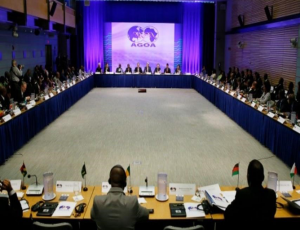 While some African countries have been able to use AGOA preferences to attract foreign investment and increase their production and exports of mainly clothing and textiles, most African countries have not been successful. However, a handful of countries have made strong use of the preference programme and have increased employment in economic sectors that benefited from duty–free treatment under AGOA.
While some African countries have been able to use AGOA preferences to attract foreign investment and increase their production and exports of mainly clothing and textiles, most African countries have not been successful. However, a handful of countries have made strong use of the preference programme and have increased employment in economic sectors that benefited from duty–free treatment under AGOA.
Ethiopia is at the forefront of utilizing AGOA. It is among the first countries to develop an AGOA strategy, a draft of which was completed in October 2013. Ethiopia is creating opportunities around AGOA outside of the government as well. In 2012, as a result of significant government investments, the Ethiopian Institute of Textiles and Fashion Technology opened at Bahir Dar University. About 45 graduates from that institute were all employed by Ethiopian apparel companies.
While this number might seem small, it is impressive and suggests that the institute has the potential to become a centre of excellence on the continent for apparel design and the backbone of the robust national apparel industry. Bahir Dar Tannery, an 11-year-old company that has been exporting gloves to Italy, Japan, and Sweden is in the final stages of completing an agreement to supply Wal- Mart. Once finalized, there will be an increase from 10,000 to 50,000 pairs of gloves a month which could lead to an employment increase from about 200 to 350. Bahir Dar Tannery is just one of the numerous companies in Ethiopia working to utilize AGOA.
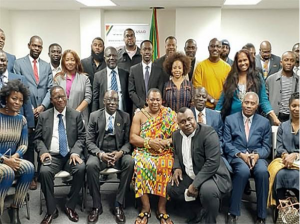 Ghana has renewed confidence in the African Growth and Opportunity Act (AGOA) which has resulted in an upward trend, with the country’s trade under the programme registering a total of US$ 748 million in 2017 according to the Ghana National Chamber of Commerce and Industry (GNCCI). The surge in performance reflects the collective efforts by the government and other stakeholders including the chamber in strengthening the country’s exports.
Ghana has renewed confidence in the African Growth and Opportunity Act (AGOA) which has resulted in an upward trend, with the country’s trade under the programme registering a total of US$ 748 million in 2017 according to the Ghana National Chamber of Commerce and Industry (GNCCI). The surge in performance reflects the collective efforts by the government and other stakeholders including the chamber in strengthening the country’s exports.
Ghana’s performance under AGOA has to be sustained by its broadly diversified exports to the U.S. in the areas of textiles and apparel, energy-related products, agricultural products, footwear, and mineral and metals. The goal of AGOA is to encourage export-led growth, and economic development and to improve U.S. economic relations with Africa. Since its enactment on 18 May 2000 by President George Bush, the Act has gone through many amendments to enable AGOA beneficiaries to take advantage of it.
Through the AGOA, South Africa has exported significant quantities of manufactured goods-most notably about 60,000 automobiles a year. Since the AGOA was established in 2000, it has greatly helped to turn a trade deficit with the U.S. into a trade surplus – of about a billion. The AGOA has been too successful for South Africa. These U.S. interests complain that the measure was designed to uplift developing countries, not boost middle-income countries like South Africa.
AGOA has helped South Africa to export much more manufactured goods to the U.S. than it does to China, mostly still just buying raw materials from South Africa. There is the demand that the AGOA be renewed with South Africa still part of it for 15 years to enable investors in Africa to make long-range decisions, without fear that their AGOA benefits would end the mid-stream.
Kenya led the East African Community members in its use of the AGOA, treaty, scoring 98 per cent. However, it came second to Ghana which recorded 99.1 per cent with Madagascar coming third at 93.7 per cent. An increase in apparel exports resulted in U.S. imports of apparel from the region under AGOA increasing by 9.9 per cent annually to $ 1.2 billion from 2016 to 2018.
WHY THE NEED FOR AGOA EXTENSION?
There are concerns that Sub -Saharan Africa’s rapid economic growth has not led to an economic transformation toward higher productivity and economic diversification. Across the continent, fewer than 10% of workers find manufacturing jobs. Clearly, the principal sector that can accelerate this economic transformation is manufacturing.
A short-term renewal of AGOA would compound the complexities and uncertainties of accessing the U.S. market. As a result, short-term renewal would deny the majority of African countries a vital policy instrument with which to transition to more inclusive and higher-value economic growth. Given that the apparel and other industries place orders months or even years in advance, a long-term extension would be particularly helpful.
Some African countries such as Lesotho, Mauritius, and Kenya have relatively robust light manufacturing sectors and as a result, benefit from AGOA. The vast majority of the 41 African countries that participate in AGOA, however, need significantly more time for the legislation to achieve its intended results. When Congress does vote to renew AGOA, it needs to ensure that the legislation will be in place for the next 15 years.
Based on past practices, the default path would be to renew AGOA and extend the validity of the preferential trading system for Sub- Saharan Africa for another 5-10 years. However, more than two decades after its inception, it is clear that AGOA has been necessary but insufficient. Despite it having been extended a couple of times.
Again, the United States has also entered an era of great-power competition with China. With China’s influence in Sub-Saharan Africa rising significantly, this competition is also playing out through the region’s political and economic institutions. Considering these opportunities and challenges, leaders in Washington (and their constituents across the United States) ought to look at Africa as a prospect for deepening commercial partnerships, not as a continent that needs to be “saved” through foreign assistance.
In a nutshell, the United States has made financial and technical assistance commitments through various projects that have shaped Sub- Saharan Africa’s economic growth and export prospects. Across Democratic and Republican administrations, the United States has remained engaged in the region, partnering with country governments to help reform their economies and make them more market-friendly, build up infrastructure capacity and integrate intercontinental economic and commercial relationships.

